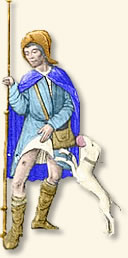What were some of the cures for the Black Death?
There were many strange ideas as to what would cure the Black Death. Some of these included human poo, chickens, religion and self harm.

Lancing the Buboes
The swellings on the groin or in the armpit of the victim was cut. A strange mixture of tree resin, flower roots and human poo was then sometimes smeared inside of the open wounds before the cut was wrapped tightly to keep the mixture inside.
The image on the right shows St Sebastian lancing the buboes of a victim of the bubonic plague. http://cid.oxfordjournals.org/content/51/7.cover-expansion
Vicary Method
Named after the inventor, Thomas Vicary, this method consists of plucking all feathers off of a live hen's bottom before strapping it to the armpit. Once the chicken became sick, they would wash it before strapping it back on, and repeated the victim was no longer ill.
Bloodletting
Perhaps one of the most popular ways to rid yourself of the plague was to remove the infected blood from a victim. The wealthier people at the time could afford to have leeches placed over their body so that the leeches could suck the blood from them; a fairly painless method in comparison to having to cut yourself and drain your blood into a bowl.

Religion
Many believed that the disease was punishment from God, sent to them for their sins. Crying out and begging for God's mercy, the Catholics whipped themselves.
The image on the left portrays two men whipping themselves for the reason explained previously.
Medicine
Grounded roast egg shells into a powder, chopped up leaves and petals of marigold flowers were all put together into a pot of good ale before treacle was added and the pot was warmed over a fire.This was drunk twice a day.
http://www.the-orb.net/textbooks/westciv/blackdeath.html
http://history.howstuffworks.com/historical-events/black-death2.htm
http://www.historylearningsite.co.uk/cures_for_the_black_death.htm


